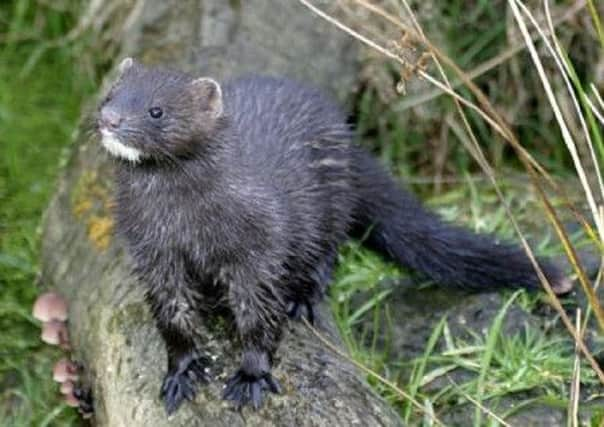Country & Coast: Wildlife decimation at the claws of former captives


The animal ran across one of the busiest roads in West Yorkshire, a stone’s throw from a wooded stretch of the River Aire and just upstream from a local nature reserve, and instantly I began to imagine the carnage it must be wreaking on populations of other wildlife, especially birds and smaller mammals.
This was actually the very first living American mink I have encountered, having previously seen only dead ones after they had been trapped and humanely killed in East Yorkshire, eradicated because feral mink are known to be among the most destructive creatures in the English countryside.
Advertisement
Hide AdAdvertisement
Hide AdIts sleek dark chocolate brown fur is why the semi-aquatic mammal was introduced from North America back in 1929, and by the 1950s there were around 700 fur farms in the UK; around 10 per cent of which were in Yorkshire. However, the mink is nothing if not a cunning survivor and many of them managed to escape from captivity.
Two more factors increased their numbers in the wild. Firstly, the emergence of animal rights activists in the 1970s led to attacks on mink farms and the well-meaning release of their stocks. Secondly, the collapse of prices for the mink’s pelt - as wearing fur went out of fashion - meant that farms became financially unviable, and when they closed down some owners simply gave freedom to their remaining animals.
American mink do not pick and choose their prey, but are known to kill everything from moorhens and coots to rabbits and rats. However, in East and South Yorkshire they are particularly associated with the decimation of the extremely threatened and undeniably cute water vole.
Three former mink farms near Hull are said to have left a major problem in the vast network of drainage ditches which separate fields in Holderness, where one female mink - small enough to enter vole burrows - is quite capable of wiping out a ditch’s entire population in just one hour.
Advertisement
Hide AdAdvertisement
Hide AdFive years ago there was an ambitious plan backed with multi-million pound funding from the EU to exterminate the UK’s feral mink once and for all, but the scale of the issue was under-estimated.
Earlier this year, Yorkshire Water admitted that the problem around its nature reserve at Tophill Low was worse than 10 years ago and began giving so-called “mink rafts” - special floating traps - to neighbouring landowners.
It’s not only in farmland and riverbanks that feral mink occur. They have caused havoc among ground nesting birds like lapwing, curlew and mallard around Malham Tarn, and feasted on trout at fish farms in the Dales and Pennines.
It is between now and late September that we are likely to see mink in the open. This is when the young go off in search of their own territories.
For the wildlife of some of the region’s riverbanks, it will be a grim time.